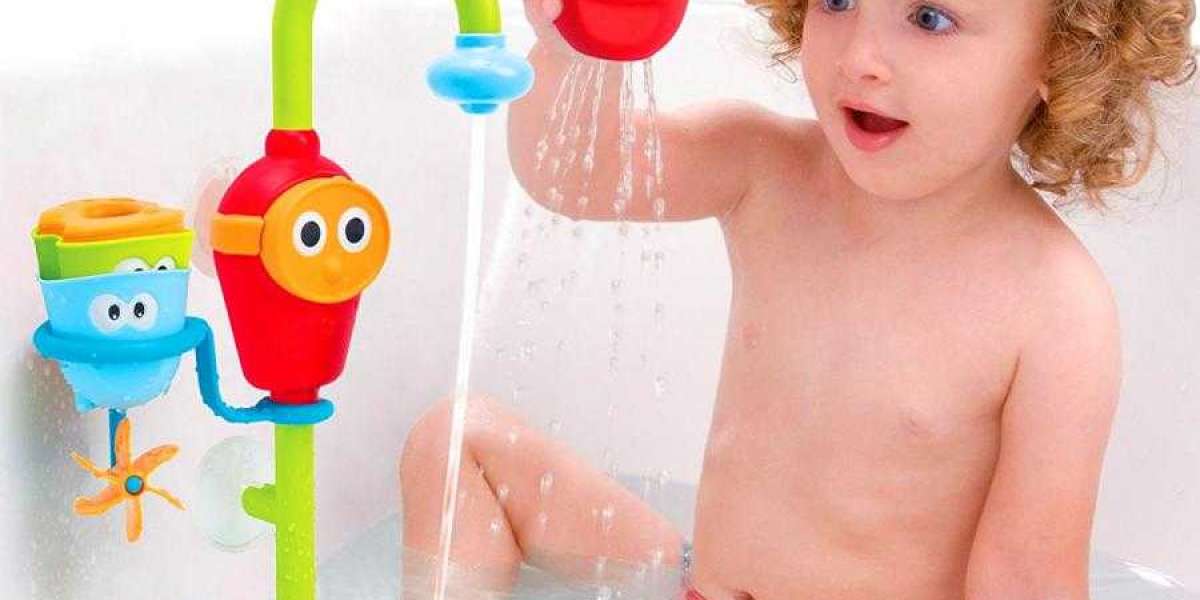The Appeal of Bath Toys
The allure of bath toys is simple: they make bath time fun. For many children, the idea of sitting in a tub full of water can be a bit daunting, especially when they are very young. Bath toys help to alleviate this fear, turning the bathtub into a playground where children can interact with floating objects, squirt water, and watch how toys behave in water. The sensory experience provided by these toys is both enjoyable and stimulating. The tactile sensation of water, the sight of bright colors, and the sound of splashing all engage a child’s senses, making bath time an exciting part of the day rather than a chore.
Types of Bath Toys
Bath toys come in a wide variety, catering to different age groups and interests. From traditional toys like rubber ducks to high-tech interactive bath toys, there’s something for every child. Here are some common categories:
Classic Rubber Toys: Rubber ducks are probably the most iconic of all bath toys. Made famous by their simplicity and vibrant yellow color, these toys float effortlessly in water and are easy for young children to grasp. In addition to ducks, other animals like frogs, fish, and turtles are also popular in the rubber toy category. These toys are typically designed for babies and toddlers, offering safe and chewable materials that are perfect for teething as well.
Squirting Toys: Squirting toys are hollow toys that fill up with water and can squirt it out when squeezed. They often come in the form of animals or whimsical creatures, and children love using them to splash water or interact with other toys. These toys help develop hand-eye coordination as children learn how to control their squirting accuracy and pressure.
Bath Books: Bath books are waterproof books made from soft, non-toxic plastic or foam that can withstand water. They often feature colorful illustrations, basic words, and simple stories that introduce children to reading in a playful way. Bath books are a great tool for early literacy and language development, as they allow children to associate books with fun and learning from an early age.
Water Wheels and Pouring Toys: These toys consist of various components that interact with water flow, such as wheels that spin when water is poured over them or containers that can be filled and emptied. They teach children about cause and effect, as they watch how their actions with water can make things move. These toys are particularly beneficial for developing fine motor skills and spatial awareness.
Floating Puzzles and Construction Toys: Floating puzzles are designed to stick to the sides of the bathtub when wet, allowing children to assemble and disassemble them as they play. Some puzzles may come in shapes like animals, boats, or geometric patterns, and they help children with problem-solving skills and hand coordination. Construction bath toys, such as floating blocks, encourage creativity and imaginative play as children build their own structures in the water.
Interactive and Musical Bath Toys: For older children, interactive bath toys that play music, light up, or involve some form of electronics can add a new level of excitement. Some toys include buttons that activate sounds or music when pressed, while others may respond to water movement or change color when submerged. These toys keep children entertained for longer periods and can stimulate auditory and visual development.
The Developmental Benefits of Bath Toys
While bath toys may seem like simple playthings, they offer significant developmental benefits for children. Through play, children engage in various cognitive, social, and motor activities that promote growth and learning. Some of the key developmental benefits of bath toys include:
Sensory Exploration: Bath toys provide a unique environment for sensory exploration. The feel of water, the bright colors, and the movement of toys in the water all contribute to sensory stimulation. Playing with bath toys helps children explore different textures, sounds, and movements, which are essential for sensory development.
Fine Motor Skills: Many bath toys, especially those that require grasping, pouring, or assembling, help develop fine motor skills. Activities like squeezing a squirt toy, manipulating puzzle pieces, or pouring water from one container to another encourage children to refine their hand-eye coordination and dexterity.
Cognitive Skills and Problem-Solving: Bath toys that involve puzzles, stacking, or cause-and-effect mechanisms help children develop cognitive skills. These toys encourage problem-solving as children figure out how to fit pieces together, how to control the flow of water, or how to trigger certain effects by their actions. By experimenting with these toys, children learn about concepts such as floating, sinking, and water displacement, fostering early STEM (science, technology, engineering, and math) learning.
Imagination and Role-Playing: Bath time offers a great opportunity for imaginative play. Children often assign personalities or stories to their bath toys, whether pretending the rubber duck is a pirate on the high seas or imagining a deep-sea adventure with their plastic fish. This kind of role-playing fosters creativity and helps children develop social skills as they create and narrate their own stories.
Relaxation and Emotional Development: Bath time can also be a calming ritual, especially with the presence of familiar and soothing bath toys. Many children find comfort in the repetitive motions of playing with water or toys, which can have a relaxing effect. For children who are anxious or resistant to bathing, bath toys can ease their fears and make the experience more enjoyable.
Safety Considerations for Bath Toys
While bath toys are generally safe, it’s important for parents and caregivers to be mindful of a few safety concerns:
Material Safety: Ensure that bath toys are made from non-toxic, BPA-free materials that are safe for children to handle and put in their mouths. Check for labels that indicate the toy is free from harmful chemicals like phthalates or lead.
Hygiene: Bath toys can harbor mold if not cleaned and dried properly after each use. Squeeze out any excess water from squirt toys and allow all toys to air dry in a well-ventilated space. Periodically disinfect bath toys with a mixture of water and vinegar to prevent mold and bacteria buildup.
Supervision: Always supervise children during bath time, especially when they are playing with small toys that could pose a choking hazard. Make sure bath toys are appropriate for your child’s age and developmental stage.
Our product list:
Conclusion
Bath toys are more than just a means to entertain children during bath time—they are tools that promote learning, development, and creativity. From helping develop motor skills to enhancing cognitive abilities through problem-solving and imaginative play, bath toys play a significant role in a child’s growth. As parents and caregivers, choosing the right toys, ensuring their safety, and fostering an environment where children can explore and have fun in the water will make bath time a cherished part of the day.








